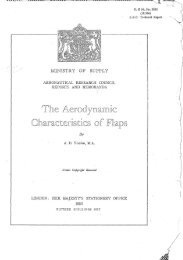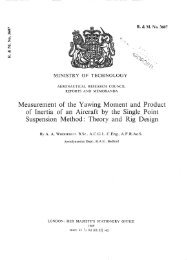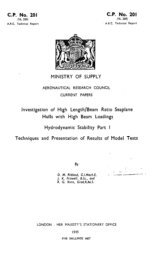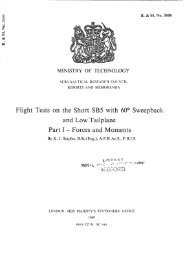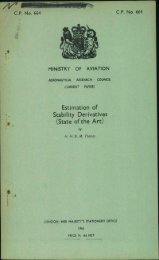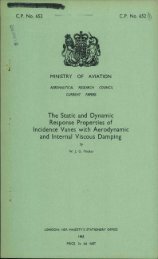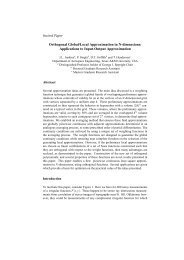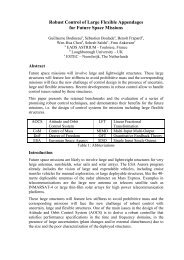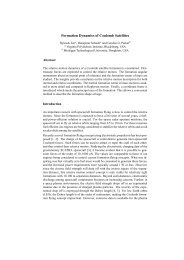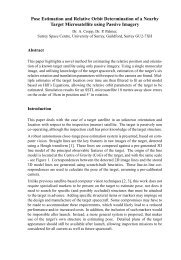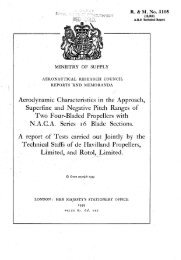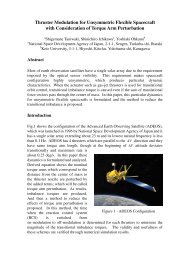The Prediction of Helicopter Rotor Hover Performance using a ...
The Prediction of Helicopter Rotor Hover Performance using a ...
The Prediction of Helicopter Rotor Hover Performance using a ...
Create successful ePaper yourself
Turn your PDF publications into a flip-book with our unique Google optimized e-Paper software.
tested, but excursions outside the range <strong>of</strong> the test programme have been<br />
approached with caution. <strong>The</strong> use <strong>of</strong> the wake geometry for tapered blades,<br />
blades with non-linear twist distributions or peculiar tip shapes has not been<br />
attempted, and the present wake model is unlikely to be suitable for these<br />
configurations.<br />
2.4 <strong>The</strong> performance calculation<br />
<strong>The</strong> sequence <strong>of</strong> operations in the performance calculation as implemented<br />
on a digital computer is shown in the form <strong>of</strong> a flow diagram in Fig.3. It is<br />
an iterative process which is converged when the radial load distribution changes<br />
by less than a certain tolerance between two successive iterations. Convergence<br />
<strong>of</strong> the load distribution implies that the bound and trailing vortex strengths,<br />
and the interference velocities have also converged.<br />
<strong>The</strong> data required consists <strong>of</strong> the geometry <strong>of</strong> the rotor, i.e. the twist,<br />
chord and mass distributions, the rotor rotational speed, the air density, the<br />
local speed <strong>of</strong> sound, and the required rotor thrust. <strong>The</strong> two-dimensional aero<br />
foil data is supplied in the form <strong>of</strong> tables listing the measured lift and drag<br />
coefficients at angles <strong>of</strong> attack up to the stall for a range <strong>of</strong> Mach numbers.<br />
Other input variables define how the wake is to be set up in terms <strong>of</strong> the<br />
number <strong>of</strong> wake revolutions, and the number <strong>of</strong> short vortex line elements<br />
representing each revolution <strong>of</strong> the wake.<br />
<strong>The</strong> blade is specified at n + 1 radial positions, r. , with r at the<br />
root cut out, and r at the tip. <strong>The</strong>se points define the ends <strong>of</strong> the bound<br />
vortex segments and are spaced more closely in the tip region <strong>of</strong> the blade<br />
where the loading changes most rapidly. <strong>The</strong> midpoints <strong>of</strong> the segments, r. ,<br />
are then associated with a value <strong>of</strong> the blade chord c. , and twist 6. ,<br />
obtained from the input data by linear interpolation.<br />
<strong>The</strong> first iteration loop starts by evaluating the initial momentum value<br />
<strong>of</strong> the downwash distribution <strong>using</strong> equations (1) and (2). On subsequent<br />
iterations, the interference velocities will be known and equation (5) is<br />
used to calculate the downwash distribution. <strong>The</strong> appropriate lift and drag<br />
coefficients at the midpoints <strong>of</strong> the blade elements are evaluated <strong>using</strong> either<br />
equations (1) and (2), or equation (5) so the thrust and torque distributions<br />
T. , Q. can be calculated immediately,<br />
11



